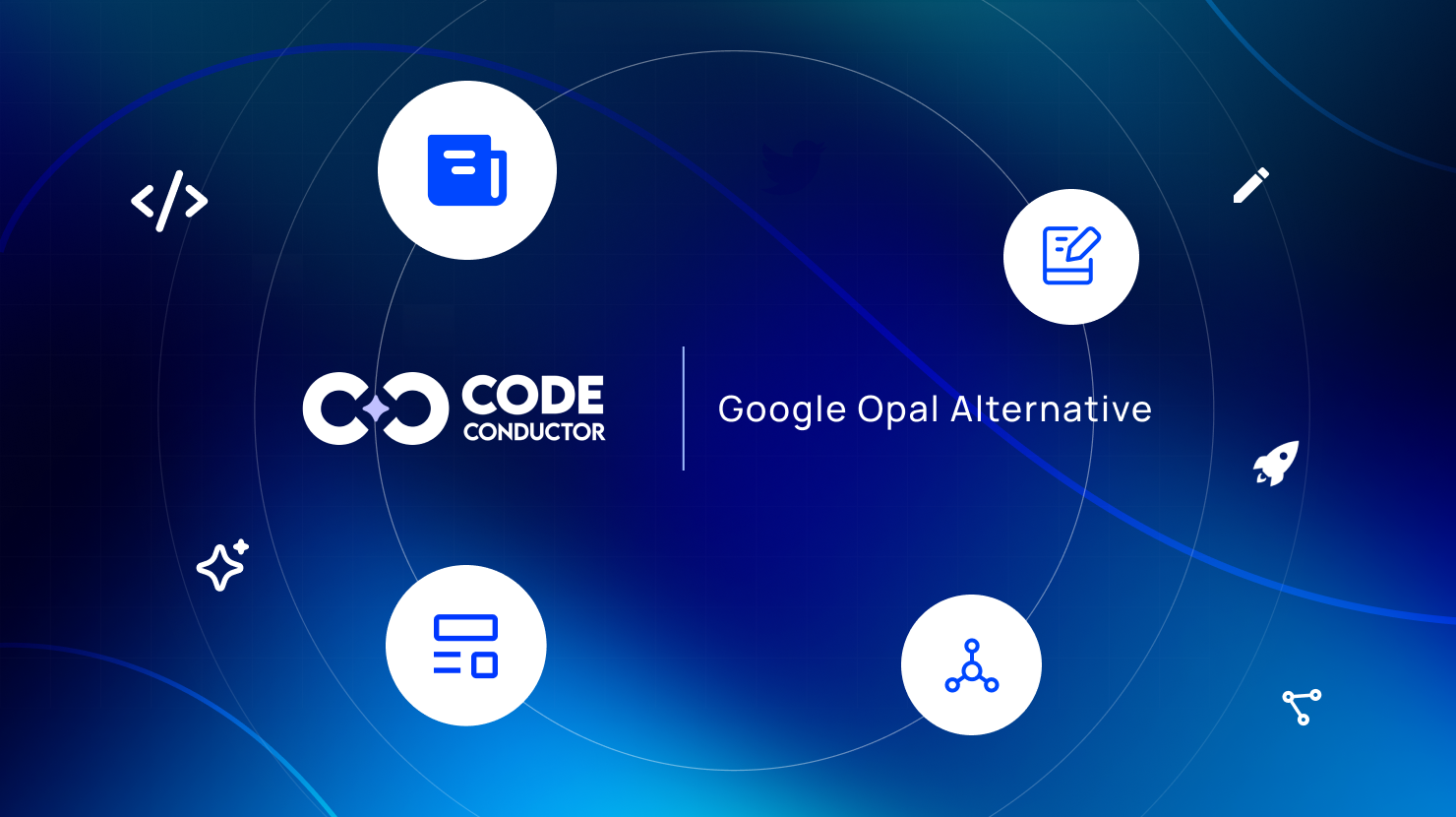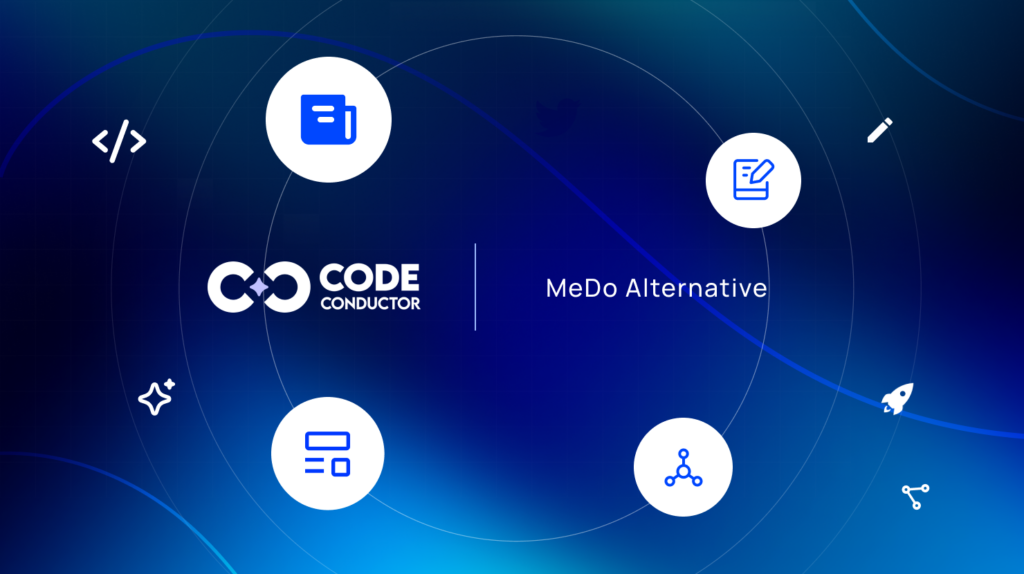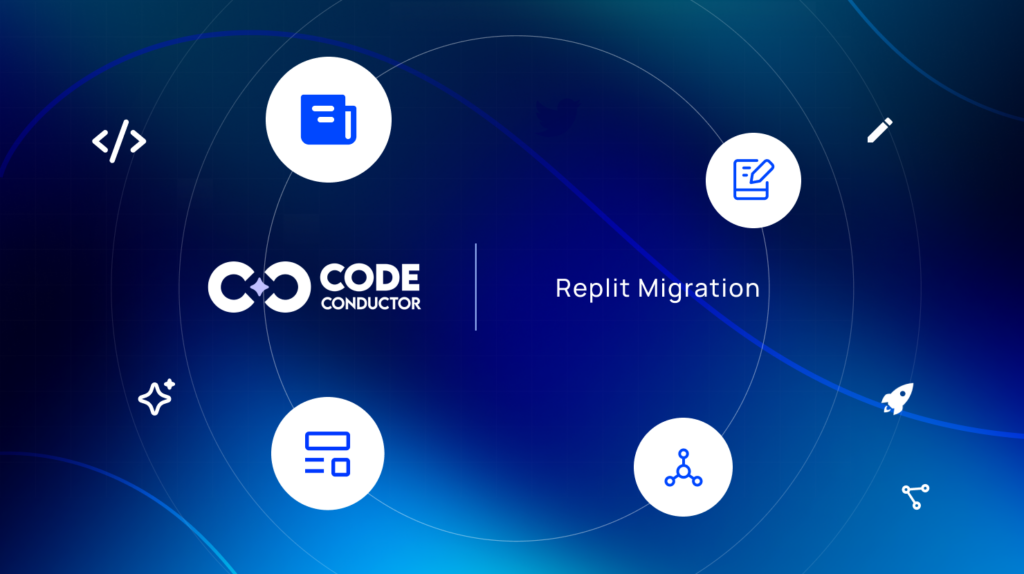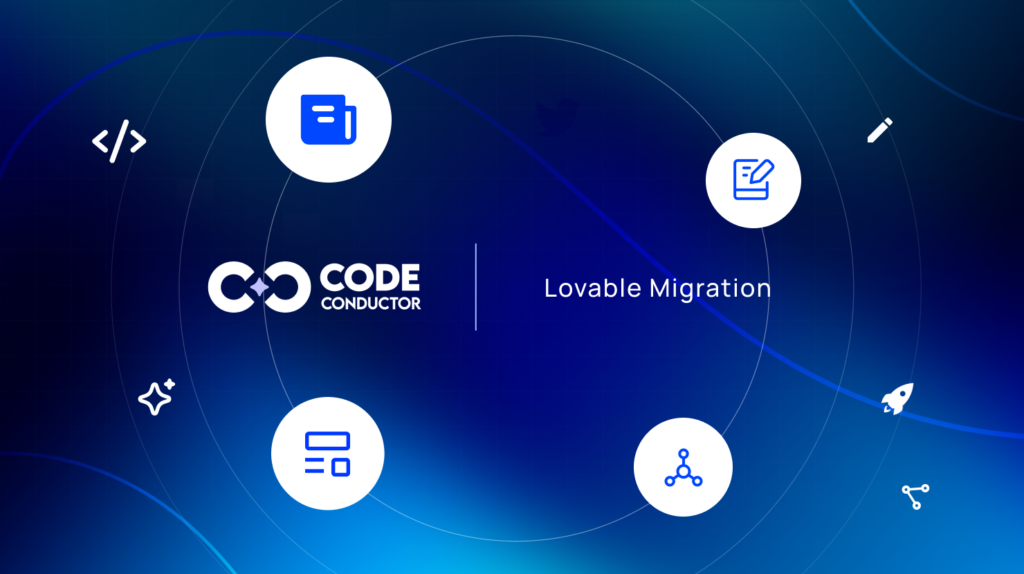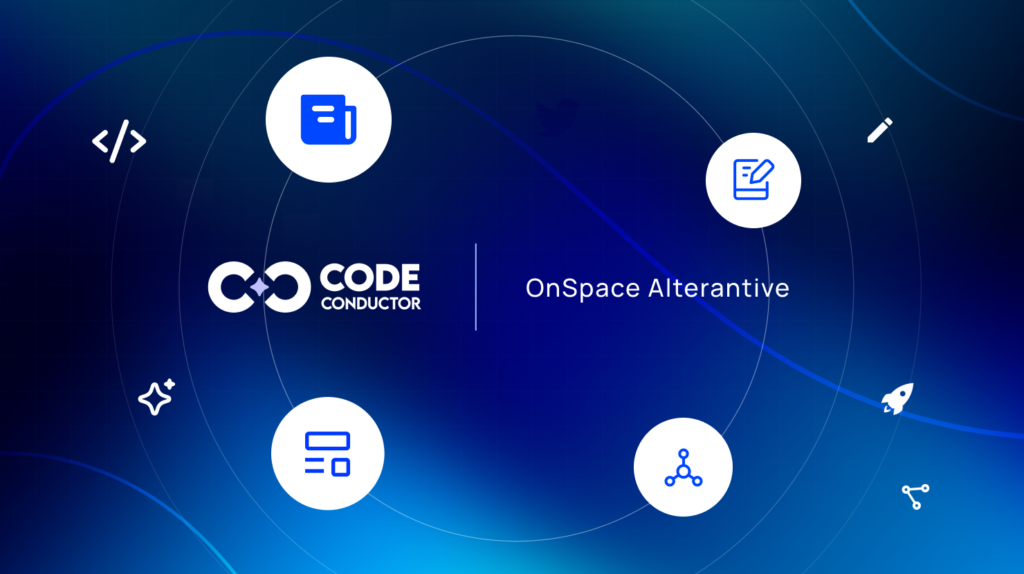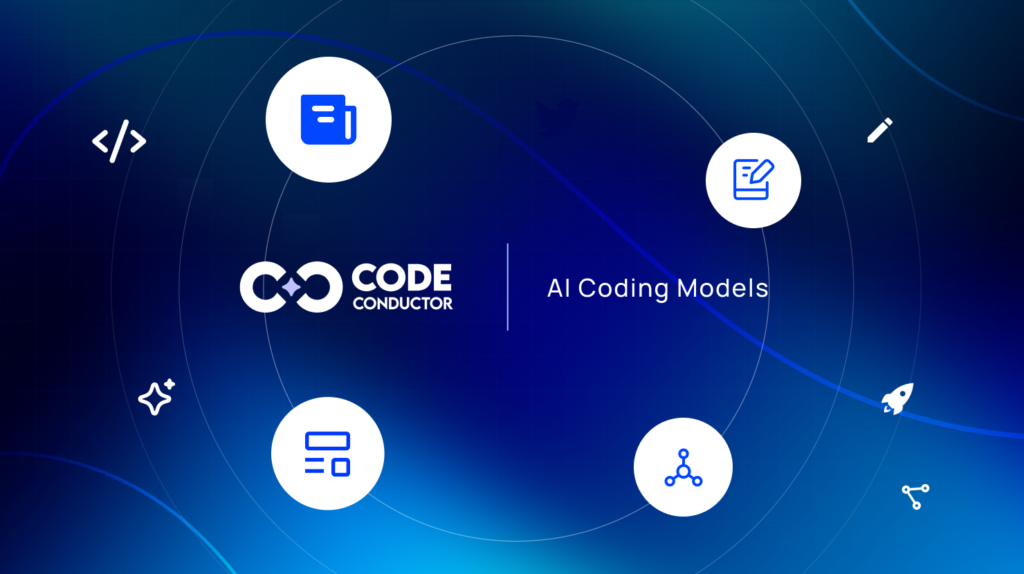Building on the promise of AI-assisted development, Google Opal AI App Creator enables the creation of intelligent, full-stack applications, ranging from a social media content generator to a client onboarding assistant, without writing a single line of code. Just describe what you want, and Opal’s intuitive interface turns your idea into a working app in minutes.
It’s a powerful tool for non-technical creators, startups, and teams who want to bring their ideas to life fast. With Opal, you can create, test, and deploy functional AI apps powered by Google’s infrastructure, no complex setup or engineering required.
But while Opal excels at speed and accessibility, many growing teams soon realize they need more, persistent AI memory, cross-platform integrations, flexible deployment, and enterprise-grade scalability.
That’s where CodeConductor.ai enters the picture.
CodeConductor.ai isn’t just a Google Opal alternative; it’s a next-generation platform built for solopreneurs, entrepreneurs, and enterprises who want more control, intelligence, and scale in their AI applications.
In This Post
- What Is Google Opal & What Does It Offer?
- Looking for the Best Google Opal Alternative in 2025?
- CodeConductor vs. Google Opal – Deep Dive Feature Comparison
- Which One Should You Use – Google Opal or CodeConductor.ai?
- Use CodeConductor.ai if you’re building scalable, production-ready AI systems:
- Real Feedback on CodeConductor
- In a Nutshell: Which Is the Best Alternative for Google Opal in 2025?
- FAQs About Google Opal
What Is Google Opal & What Does It Offer?
Think of Google Opal as Canva for AI-powered apps.
Just as Canva simplified graphic design for non-designers, Opal democratizes app creation by letting anyone build intelligent, full-stack applications without writing code.
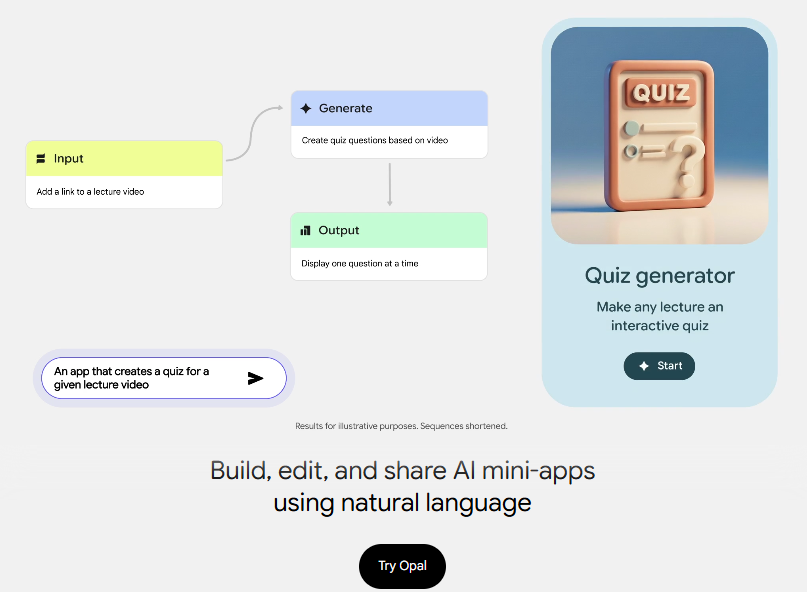
With Opal, you can:
- Describe your app in natural language: Simply tell Opal what you want, “create a social media post generator” or “build an AI onboarding assistant”, and it understands.
- Use a visual, drag-and-drop node system to design complex workflows and connect data flows visually, without needing to code.
- Access multiple AI models: Tap into Google’s generative AI ecosystem to create apps that can generate text, audio, video, or images seamlessly.
- Integrate with Google services: Connect easily to Google Sheets, Cloud, Firebase, and Gemini models for extended capabilities.
- Collaborate in real time: Build alongside your team with shared editing, live previews, and easy deployment.
If you’ve ever wanted to build custom AI applications but felt limited by technical complexity, Google Opal tears down that barrier. It makes sophisticated app creation as approachable as dragging elements on a canvas and describing your goals in plain English.
Looking for the Best Google Opal Alternative in 2025?
As AI app creation evolves, many teams are realizing they need more than quick prototypes; they need platforms that scale with real products. While Google Opal is excellent for fast experimentation, it can feel limiting once your workflows grow in complexity or your apps need to connect beyond Google’s ecosystem.
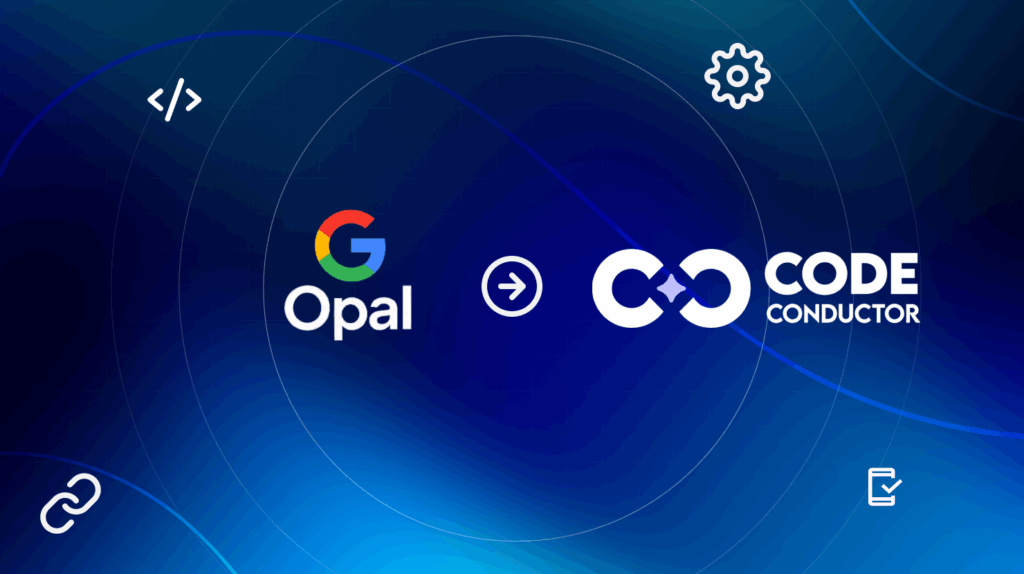
Many creators start searching for a Google Opal alternative because:
- They need persistent memory that maintains context across sessions and users
- Their projects require advanced integrations beyond Google Cloud tools
- They want production-ready deployment, not just visual prototypes
- They need collaborative features, version control, and auditability
- They want the freedom of multi-cloud or hybrid deployment
That’s where CodeConductor.ai shines.
CodeConductor.ai is built for teams that are ready to move from prototyping to production. It’s a no-code, visual AI platform that combines persistent logic, scalable infrastructure, and end-to-end deployment support, all in one unified workspace. With CodeConductor, you’re not limited to one ecosystem; you can design, automate, and deploy intelligent applications anywhere your business runs.
CodeConductor vs. Google Opal – Deep Dive Feature Comparison
Both Google Opal and CodeConductor.ai make AI-powered app creation accessible, but they serve different goals.
Opal is built for speed and simplicity, great for prototyping within Google’s ecosystem. CodeConductor, on the other hand, is built for scalability, persistence, and cross-platform flexibility, giving teams complete control over how and where their AI apps run.
Here’s a closer look at how they compare:
| Feature / Attribute | Google Opal | CodeConductor.ai |
|---|---|---|
| App Creation | AI-generated apps via natural language prompts | No-code, visual AI logic builder with persistent memory |
| Workflow Design | Drag-and-drop node editor within Google ecosystem | Full visual logic designer for complex, multi-step workflows |
| AI Model Access | Google Gemini and integrated AI APIs | Supports multiple AI models, APIs, and open-source frameworks |
| Memory & Context | Session-based; limited cross-session recall | Persistent memory across sessions, users, and workflows |
| Integrations | Google Cloud, Sheets, Firebase | Cloud-agnostic: APIs, databases, SaaS tools, and webhooks |
| Deployment Options | Hosted on Google Cloud | Deploy anywhere—cloud, hybrid, or private environments |
| Team Collaboration | Basic real-time co-editing | Role-based access, permissions, and version control |
| Scalability & Monitoring | Great for small-scale prototypes | Built for enterprise-grade apps with monitoring and analytics |
| Best For | Non-technical creators and small teams | Teams building production-ready AI systems and automations |
Which One Should You Use – Google Opal or CodeConductor.ai?
- The right choice depends on who you are and what you’re building.
- Use Google Opal if you’re creating lightweight AI apps or testing ideas quickly:
- Perfect for non-technical creators, startups, and small teams
- You want to build fast using natural language prompts
- Your focus is on prototypes, internal tools, or quick MVPs
- You’re comfortable staying within the Google Cloud ecosystem
- Goal: Bring ideas to life quickly with minimal setup and limited scope
Use CodeConductor.ai if you’re building scalable, production-ready AI systems:
- Ideal for teams, enterprises, or developers ready to go beyond prototypes
- You need apps that remember users, maintain logic, and scale intelligently
- You want control over how and where your app is deployed, cloud, hybrid, or private
- You rely on multiple APIs, databases, or third-party integrations
- Goal: Design, automate, and deploy persistent AI workflows that evolve with your business
Real Feedback on CodeConductor
Code Conductor Important tool – ⭐️⭐️⭐️⭐️⭐️ 5/5
What do you like best about CodeConductor?
The code of conduct is used by my company for a series of behaviors to be observed towards colleagues and customers, it is very useful to understand all the regulations in your countryWhat do you dislike about CodeConductor?
It helped me on how to behave with a customer, what to say and not say to colleagues so as not to offend their sensitivity and avoid problems of incorrect conductWhat problems is CodeConductor solving and how is that benefiting you?
Helps with how certain corporate affairs should be resolved, such as managing corporate agreements with very important clients, avoiding making legal mistakes and getting into disputes with the country they belong to.
In a Nutshell: Which Is the Best Alternative for Google Opal in 2025?
If you want to build quick, AI-powered prototypes or internal tools, Google Opal is a great place to start. It’s simple, intuitive, and ideal for turning plain-English ideas into working apps within minutes.
But if you want applications that:
- Remember users and workflows
- Connect across APIs, data, and cloud platforms
- Deploy anywhere, not just within one ecosystem
- Scale into production-grade AI systems
- Support real collaboration and compliance
Then CodeConductor.ai is not just an alternative, it’s your next evolution.
Google Opal helps you prototype. CodeConductor.ai helps you build intelligent, scalable AI systems.
Best Google Opal Alternative – Try it Free
Ready to upgrade? Start building future-ready AI applications with CodeConductor.ai today.
FAQs About Google Opal
Is Google Opal free to use?
Yes, Google Opal is currently available as an experimental, free-to-try AI app creator under Google Labs. It allows users to build and test AI-powered applications at no cost while the project is in its early preview stage. However, advanced functionality and scalability may be limited until commercial tiers are introduced.
What’s the best alternative to Google Opal as a no-code AI app builder?
The best Google Opal alternative in 2025 is CodeConductor.ai. It offers a complete no-code environment with persistent AI memory, enterprise integrations, multi-cloud deployment, and role-based collaboration, features that go far beyond Opal’s experimental capabilities. CodeConductor.ai is built for production-ready AI workflows, not just prototypes.
Why should I choose CodeConductor over a free experimental tool like Google Opal?
While Google Opal is great for experimentation, CodeConductor.ai is designed for real-world scale. It provides persistent memory across sessions, cross-platform integrations, and deployment flexibility, helping teams move from prototypes to fully deployed AI products. In short, Opal lets you test ideas; CodeConductor.ai helps you turn those ideas into intelligent systems ready for production.

Founder CodeConductor

